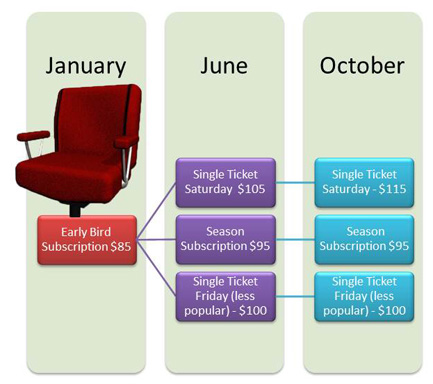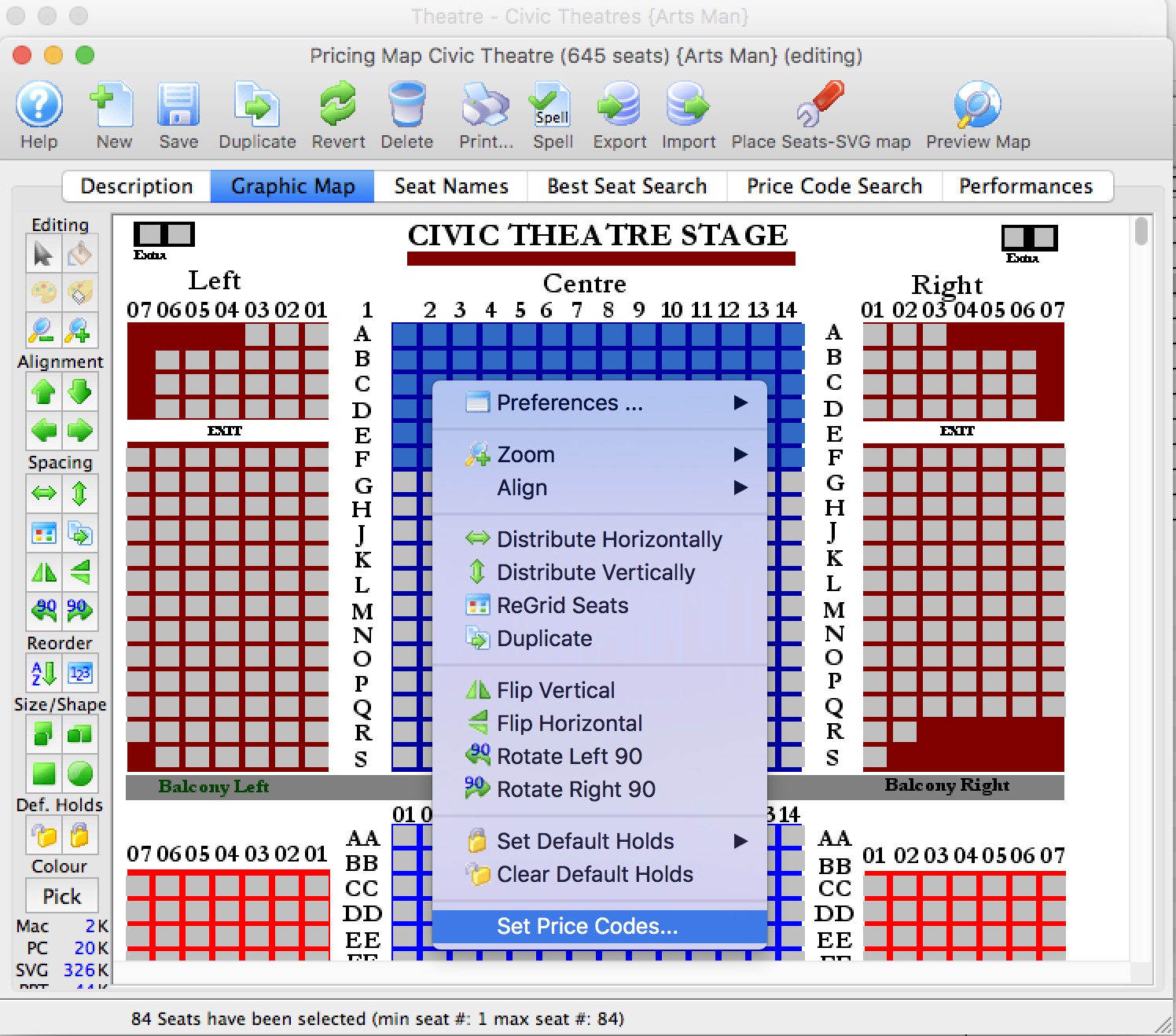Demand Based Pricing and Seat Selection

Demand based or Dynamic pricing is managed through
- Vertical Scaling - where the base prices of tickets are lowered or raised for a performance based on a fluxuation in demand -AND/OR-
- Horizontal Scaling - where more seats are made available at specific price codes within the venue. For example, you can expanding the area where 'main floor' pricing is to include the balcony or sides because the event or performance is selling well.
Some organizations choose to implement a higher price schedule when ticket sales are in high demand. Likewise, prices may need to be lowered in an effort to bring more patrons in. Demand based pricing allows you to change the Pricing map while sales are currently ongoing. There are a few Theatre Manager tools that can help you.
Vertical Scaling
To implement vertical scaling, simply change the base price of tickets for on the event set up screen for:
- one or more price codes
- on one or more performances.
Horizontal Scaling
A new pricing map lets you implement horizontal scaling very quickly - meaning changing which seats are price code A, B, C etc. If you have created multiple pricing maps in a venue, all you need do is one of the following:
- Edit the price map you are using for price code scaling and on the Graphic Map tab, simply
- Select a bunch of seats
- Right click on one of them
- Pick 'Set Price Codes...' to assign one or more new price code to the seat
- Enter the new price code
- The new price codes takes effect immediately on all venues associated with price map
- Change the price codes for specific performances in the middle of a sale to re-scale the seating sections in a venue dynamically.
- Change the pricing maps for an entire event if you want to move the event from one venue to another or to use a different map within the one venue.
- Change the methodology and order that seats are offered online based on the new pricing map. This may be useful for dinner theatre sales as the performance is sold and fewer seats are available.

|
There are rules for switching venues or pricing maps. The new venue or pricing map must:
|
Helpful Tools
- Using the The Ticket Printing, Invoicing and Inventory Analysis - Tickets Sold/Revenues by Promotion and Price Code report, you can determine which seats have been sold and which price codes you may want to change.
- The Hot Seat Analyzer. You can use it to:
- Determine the usage frequency of seats in a venue and/or the revenue capacity of a particular seat.
- Find out if the current price zones in the venue are appropriate or if they should be allocated differently to accommodate customer preferences in your venue.
Using the tool, you may replace the typical bands of seats with different pricing on aisles or zones in the venue.
